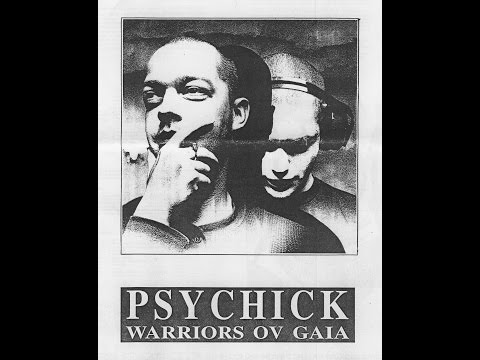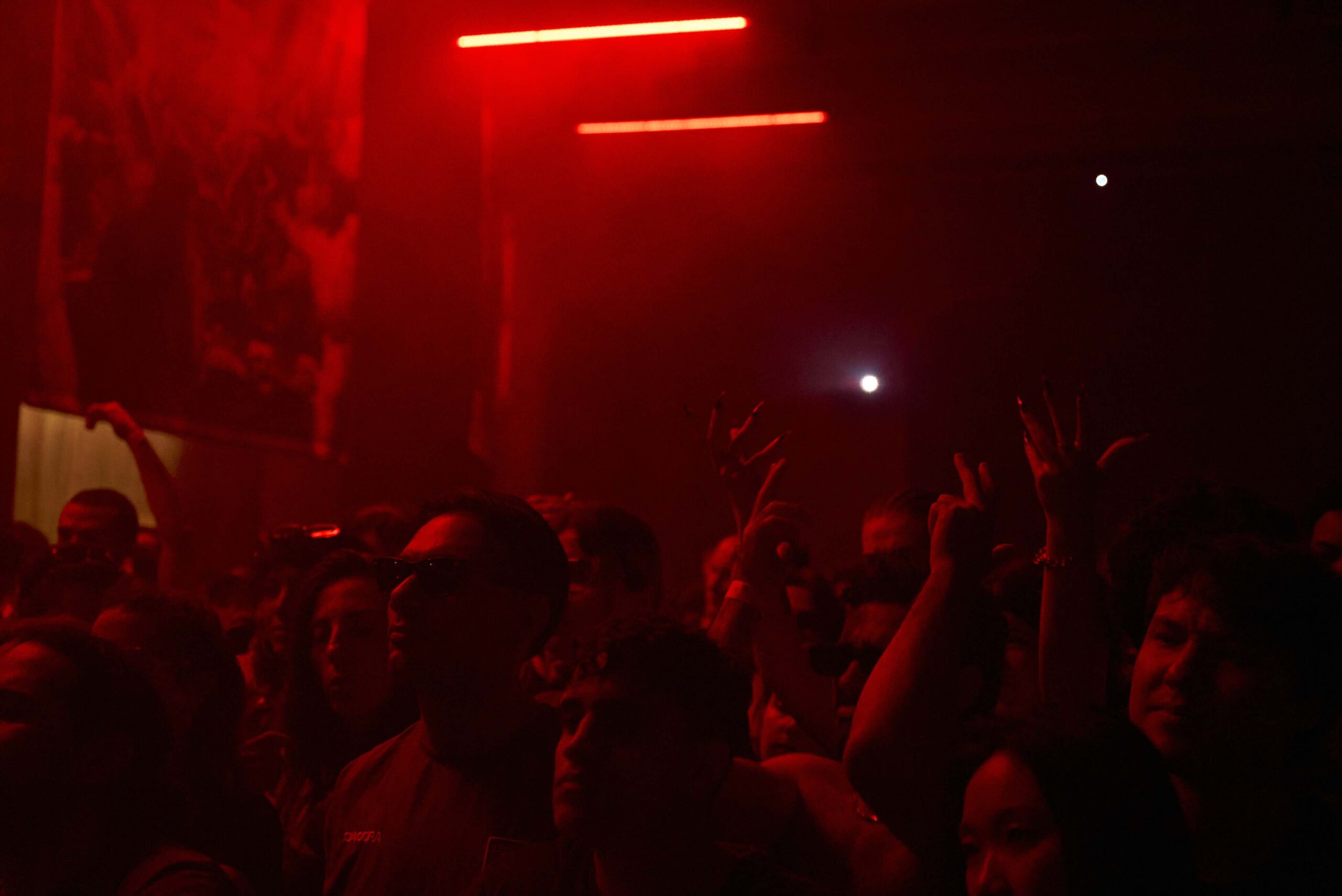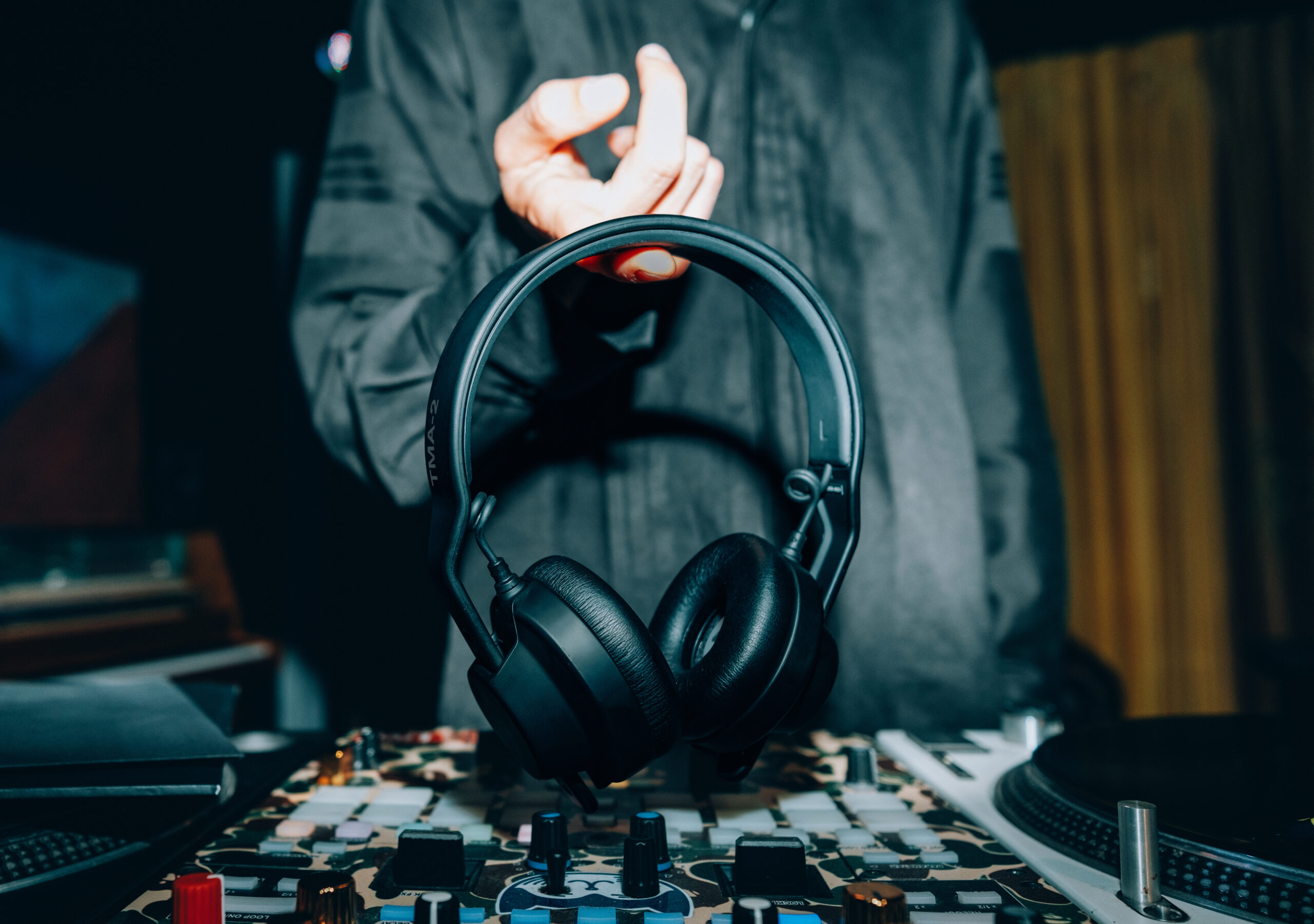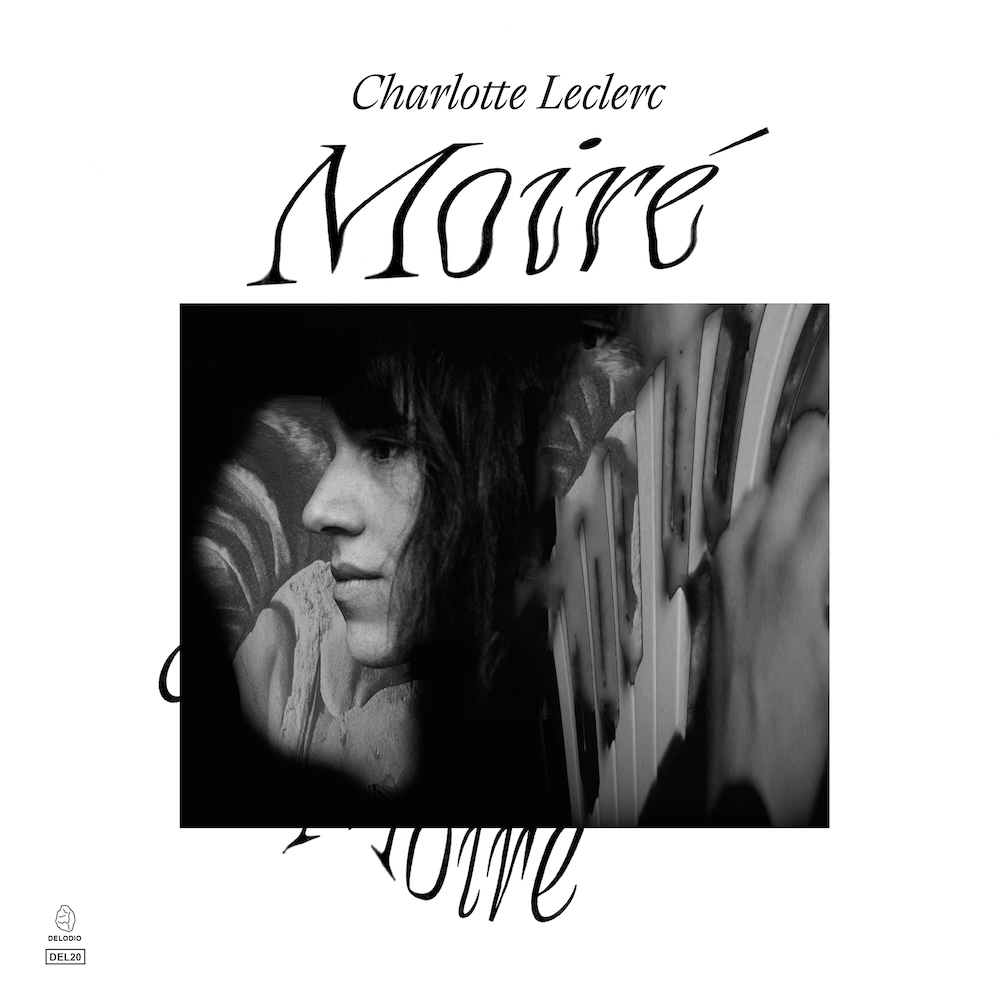Psychick Warriors Ov Gaia Talk

"For my interview I chose this group of people because they were hugely influential on my musical development, and outlook on music. They were producing music from the late 80s and were very active in the techno scene in the 90s. They had an ethos, that I adopted, the notion that music is a device, or tool for unlocking states of perception. What also drew me to them was the use of imagery taken from the Temple ov Psychick Youth, which was an occult society created by Genesis P. Orridge. They evolved with each release, eventually perfecting the ideas of music as magick with the album, Psychick Rhythms Vol.1 and later on with Record Of Breaks." Oliver Ho.
What were your influences (art, music, experiences) that made you start making music?
REINIER: Reinoud and Robbert introduced me to a wealth of music I didn't know existed: Industrial, post-punk, electronic music of all ages and ethnic music from all over the world. In this universe of sound was so much more possible than what I could imagine at the time and the artists who explored these possibilities seemed totally free doing so. This was very appealing to me.
REINOUD: There was a so-called economical crisis going on and there was a thriving counterculture with a strong DIY attitude. Remember, it was the post-punk era and the time of the squatters for instance. Music is probably the most accessible way to express oneself. Dadaism, expressionism, surrealism, anarchism. Maybe, musically Einstürzende Neubauten were important at that time but there were many more like Cabaret Voltaire, Throbbing gristle and what came out of these groups. But the world is big so there was a lot of ethnic music to be explored too. Like sufi-music from Pakistan, Gnawa from Morocco, music from the Caribbean isles, West African, South American, Funk and so on, and so on.
TIM: Many and varied. I grew up in a musical family. My father for example is an engineer and producer, and I remember going to the studio with him as a kid and falling in love with the huge mixing desk. It looked like the bridge of the Enterprise to me 🙂 But with regard to PWOG, I was introduced to a whole universe of new sounds when I met them! They were a bit older than me, and knew all sorts of stuff I'd never even heard of. Industrial/post-punk etc. And then Reinoud importing the early acid and deep house tracks through the record shop he worked at. It was a very exciting time for me.
What drew you all together to work as a group?
REINIER: In 1985 we started jamming together in a cellar with a group of friends and things evolved from there.
REINOUD: Reinier and I were already close and shared a lot of ideas and thoughts, we simply did the obvious thing and started to make music in the early eighties. PWOG evolved out of this collaboration. There turned out be more people with the same attitude in the grim town of Grublit and one of them was Robbert. As a musician and soundman with a lot of knowledge about musical history and creativity he had been assisting us in previous endeavours. By the time PWOG came into existence we were all working together. Then little Tim came along and lent us his capable hands and ears.
Were there particular roles within the group?
REINOUD: Yes but with a lot of overlap, I think we formed an organic whole. I would work a lot on content and concept and would work on particular compositions.
REINIER: Reinoud was always an ideas man and an instigator; his enthusiasm brought us together under one umbrella. He saw the larger scope of things and voiced a direction in which to go. Robbert had equipment and was in the years before PWOG already working on stuff by himself, a lot of which Reinoud and I found very interesting and useful. I did my small part at first, added some samples and percussion to the PWOG mix but I didn't have a defined outlook on house/techno music. I didn't own any apparatus and learned the basics of sequencing through watching Robbert and with his help I was able to edit the material for the first album. Tim stepped in when final versions of the songs were recorded and also mixed the live sets and was in that sense an active member.
ROBBERT: So here were some guys interested in sound explorations and no matter how basic our means were both in ability and equipment this didn't prevent us from having a similar kind of gratification any highly skilled or even professional musician can attain when playing with equally gifted peers using high end instruments. Since none of us were a virtuoso on any given "instrument" it allowed us to try anything that could make a sound. The incorporation of electronic instruments though, did give us a wider variety of sounds and more control over the sonic output.
TIM: I was the live front of house engineer and helped engineer and co-produce some of the records. Later on I was assisted by Peter Koedoot for (live) mixing, he's a great dub/mix engineer and was an enormous help to me in improving the sound.
Tell me about the name and relevance that the psychic temple had in the origins of the band? You use the psychic cross, which also has connections with the tree of life in Jewish mysticism.
REINOUD: First of all, the pompous name was a joke, a working title, but we got stuck with it.
REINIER: Mythology has always been one of our main interests. It is easy to fall under it's spell and to find somewhere in that vast source of fantastical stories something that you want to follow or even become, something to believe in and govern your life with, something that offers an escape to reality or transcends it. And while this might enrich a person's life, it can enslave a person too if it is taken too literally. Ultimately mythology is a record of human consciousness through the ages, a history of how human beings saw their place and their part in the whole as they developed/transformed. If you read it right it becomes an important vessel of knowledge about human nature and sheds invaluable light on what we were, what we became and what happened along the way to bring about this transformation.
Were you practitioners of magick at the time, what role do you feel magick and esoteric philosophy has in the making of art and music?
REINOUD: I experimented with some techniques to manipulate myself for a while. It requires not only discipline but also a form of a believe system, I am not good at either! We may assume that both art and science stem from the same root that may probably be regarded as magical. Curiosity, exploration, discovery, understanding, communication, manipulation, etc.
There is certainly a narrative in your music that describes a spiritual approach, also one that is psychedelic, e.g. you sample Timothy Leary. Has the use of drugs and psychedelics influenced your work and attitude, what role did it play?
TIM: For me; yes. But, in a wide sense. I think you'd be fairly hard pressed to find any musician who wasn't influenced by psychedelics in some way, even if that's only listening to other people's work who were influenced by psychedelics.
REINIER: Drugs did not play a role in PWOG, not as a method or a practice that guided/expanded our creativity nor was it fueled by it as a rule. Same goes for magic and mysticism, it wasn't something we needed to do ourselves to make our lives work or to give it meaning. We were fascinated by both western and non-western cultures where magic and ritual plays a role and where techniques for trance were practiced. We used it as an inspiration, but PWOG wasn't a magico-ritualistic project in the popular sense.
Instead we simply saw dancing for what it is: a powerful means to loose control and let yourself go, as is popularly said, to achieve some form ecstasy or trance, to break free of controlling mechanisms that keep us in our place, to dissolve the barriers that restrict our freedom, to reconfigure the mental construct that isolates us from others and the world around us, to reconnect with what we're always part of but became separated from by reason and consciousness and to have an experience of unity, with other people… with life, the universe and everything 🙂 We recognized that all this is possible if you want to and wanted to share this with the recreational dancer. That's why we used Timothy Leary's 'return to the source' sample, not for it's psychedelic connotation but because it's about that reconnecting with the whole (of nature, you could call it, as represented by the name Gaia).
ROBBERT: This goes back to some primal roots of not so much music but a shared communal experience also using methods of non-verbal, non-logical forms of communication? It has been claimed that the paintings in the caves of Lascaux were meant as non-linear, non-narrative visual overload, created under the influence of magic mushrooms and that Lascaux itself was chosen over other sites because of its superior acoustics. This in turn could lead to the speculation that they might have been holding events similar in spirit to our current era acid-house parties, some 20 thousand years ago.
What was the international techno scene like in the early 90s?
TIM: Very fresh and exciting. A lot like the early punk days in fact I suppose, with a strong DIY ethic. But perhaps even more open and accepting. One of the things that attracted me to house/techno etc. (beside the music) was the accepting and anonymous character of the scene. You could meet all layers of society, no-one cared what you wore or anything like that. Dark rooms, lots of smoke, a strobe, happy people, dancing for hours, smiling…happy days. I never witnessed any violence at all in those days.
Did you notice any differences in how people in different countries responded to your music?
ROBBERT: Pretty much the same everywhere, people dancing, but in Scotland when playing with EC, they went nuts.
REINOUD: Not really, most depended on the setting. I remember a festival where we had to play between the Wu-Tang Clan and the Prodigy. Not a success. We were not a real festival band, our set had to evolve, build up based on the response of a dancefloor, in a setting like that it turned out to be impossible. We couldn't compete with a battery of prerecorded songs that are presented as a live gig. Again naïve.
TIM: I think we were surprised by the enthusiasm of British crowds when we first performed there. I'm thinking of Megadog and Pure in particular. Amazing crowds, always. Pure in Edinburgh was just mental. In the best possible way. Unforgettable.
Rhythms vol1 is a particular favorite of mine. Did you ever intend to make a vol.2? I think its a very conceptual record, its a tool, if you want it to be. In voodoo, rhythms can be used like spells, I felt that this record was taking a similar approach too. Could you describe how the record came about?
REINOUD: You are spot on, even on the voodoo bit, for we had been reading Maya Deren's Devine Horsemen and she was the very source of inspiration. That record was meant to be a tool but also a statement in a way. It was the time of Ai techno and ambient and I think a lot of people expected us to take that road too. We thought of that being nice but boring. We didn't want to please anybody and decided to explore another angle.
REINIER: I think it's our best work, it's straightforward, almost no frills and non-romantic. Many people think it's just called Rhythms, but in fact the aforementioned cross was used on the sleeve as representing the word 'psychick'. Now I like the idea that it could have been unassumingly called 'Rhythms'.
Making vol.2 is a thought I've been entertaining recently… we'll see!
TIM: The mix was done in Reinoud's front room, and I remember having trouble with the room's acoustics…was a tricky mix that. I tried to mix it a bit more dry and direct than the previous records, where I was going for space and placement more. In an attempt to up the quality I took it to The Townhouse in London to be mastered by the great Kevin Metcalfe, who I knew of from his work for ON-U. He did a good job but there was only so much he could do really.
We very rarely worked in proper studios. Either we'd go to someone's home studio, or (most of the time) we'd rent a desk and outboard. The first album was mixed in Robbert's front room, the second album was mixed in my bedroom. On Auratones (Supercube 5C) mostly….
How long did it take to record?
TIM: Rhythms took a day or two I think (may have been 3?). Not long, as we rented equipment so time was always limited.
Where there special environments you needed to create the music?
REINIER: Nope, also here no need for special atmospheres of the magical/mystical/spiritual kind, if that's what you mean. I like the home studio setting best and it doesn't need to be fancy… the room I work in now doubles as a storage room.
Do you remember a special date where that material was performed live that was particularly special?
REINIER: Performing the Psychick Rhythms set for MegaDog at the Rocket in London, a venue in the University of North London grounds, as it was then called, was particularly memorable. As usual I left the loops running for a long time, without too much change. Tim really had to work it all the time 🙂 And he did, to great effect! Playing it loudly and with the heavy strobe lights it became forceful… people almost danced themselves to bits! At that gig we did an interview for a documentary on tribal/ritual dance music and these people filmed our set. Later we had some time off in London and, of all places, ended up in the Tower Records mega store on Piccadilly Circus. We saw the video footage of our set on the information stand video screens. I was amazed, that it was there in the first place, but also cos I saw ourselves for the first time like that; the compressed images and sound really captured a hypnotic underground spectacle. Wish I could see that again but sadly we couldn't get hold of the video…
TIM: Well for a while the live set was basically a long remix of that track. I'd dub it up heavily to keep it interesting, and RB and JH had control of the arrangement via the sequencer (an Atari1040st running Steinberg, triggering several Akai samplers, a Roland R8 & Juno 106 and some other small bits and pieces). We used 20+ DI boxes to split all the channels from stage to front of house, I'd send my mix back to stage side fills so the guys could hear what I was doing and react to it. Later on when Joris H joined he would have a 24 channel desk on stage too and do submixes that I could then use in my mix FoH. It was technically quite challenging (PA companies would often not have the 20+ DI's needed for example, and would have to go find them quickly…and festival changeovers were tricky, no soundcheck, often not even a linecheck, I'd just open the faders & hope for the best…) but a very powerful way of working. From one number to the next all of the channels would change sounds, so I had to be very fast on the draw to set up the next mix in seconds….Peter & I would often draw a little crowd of perplexed onlookers! ha 🙂
The good thing about being in the room as opposed to on stage is you can really see/feel the crowd's vibe and react to them. A very powerful feedback loop from stage, to me, to crowd, and back to stage again. At it's best it was…trancendental. Hard to describe.
But it wasn't always like that of course. We had some notable disasters.
What other bands did you relate to at the time?
ROBBERT: For me on a personal basis HIA and Eat Static, musically, US "deep house" artists.
REINIER: In the late 80's I wasn't immediately bowled over by house and techno music. I still played a 70's/80's mélange of Industrial, post-punk and New Wave at home, along with David Bowie and some prog-rock.
TIM: Various new wave and industrial-ish stuff, Coil, Chris & Cosey, etc, the early Acid stuff (Trax etc), The Black Dog, L.F.O., Higher Intelligence Agency, Underground Resistance, Speedy J, Prescription Underground, The Orb, ON-U Sound, Aphex Twin …and many many others! Mind you there was plenty I didn't like too.
Did you document much of that time? Film or recordings of live sets etc..
REINIER: We didn't film ourselves but Boris Hiesserer (Pyromania Arts Foundation) did, well, most of the early PWOG footage on YouTube is actually filmed by his girlfriend. Thinking of Boris… his vj-ing style was kind of psychedelic.
TIM: I have some cassette recordings of gigs, recorded from the front of house desk. I will digitize them one day, if they haven't degraded beyond playback by now. But I need to find a decent deck with adjustable azimuth etc first. And anyway, it was mixed to suit the particular room we were playing, so most of the recordings sound weird/unbalanced when replayed out of context.
Do you have plans to re-release any old PWOG material?
TIM: Sacred Summits are releasing the '89 cassette demo on vinyl for the first time, should be out end of july/early August I believe. Apart from that there are no plans to re-release any old material.
What are your current musical and artistic projects?
REINIER: see here Corps Flottants
TIM: The last project (that got a release) I was involved with was Dadavistic Orchestra, a collab between Reinier, Robbert, myself and The Black Dog. I hope that may be continued at some time in the not too distant future. Apart from that, who knows? Anything is possible…
ROBBERT: Enkidada, Dadavistic Orchestra.


















Must Reads
David Holmes – Humanity As An Act Of Resistance in three chapters
As a nation, the Irish have always had a profound relationship with the people of Palestine
Rotterdam – A City which Bounces Back
The Dutch city is in a state of constant revival
Going Remote.
Home swapping as a lifestyle choice
Trending track
Vels d’Èter
Glass Isle
Shop NowDreaming
Timothy Clerkin
Shop Now